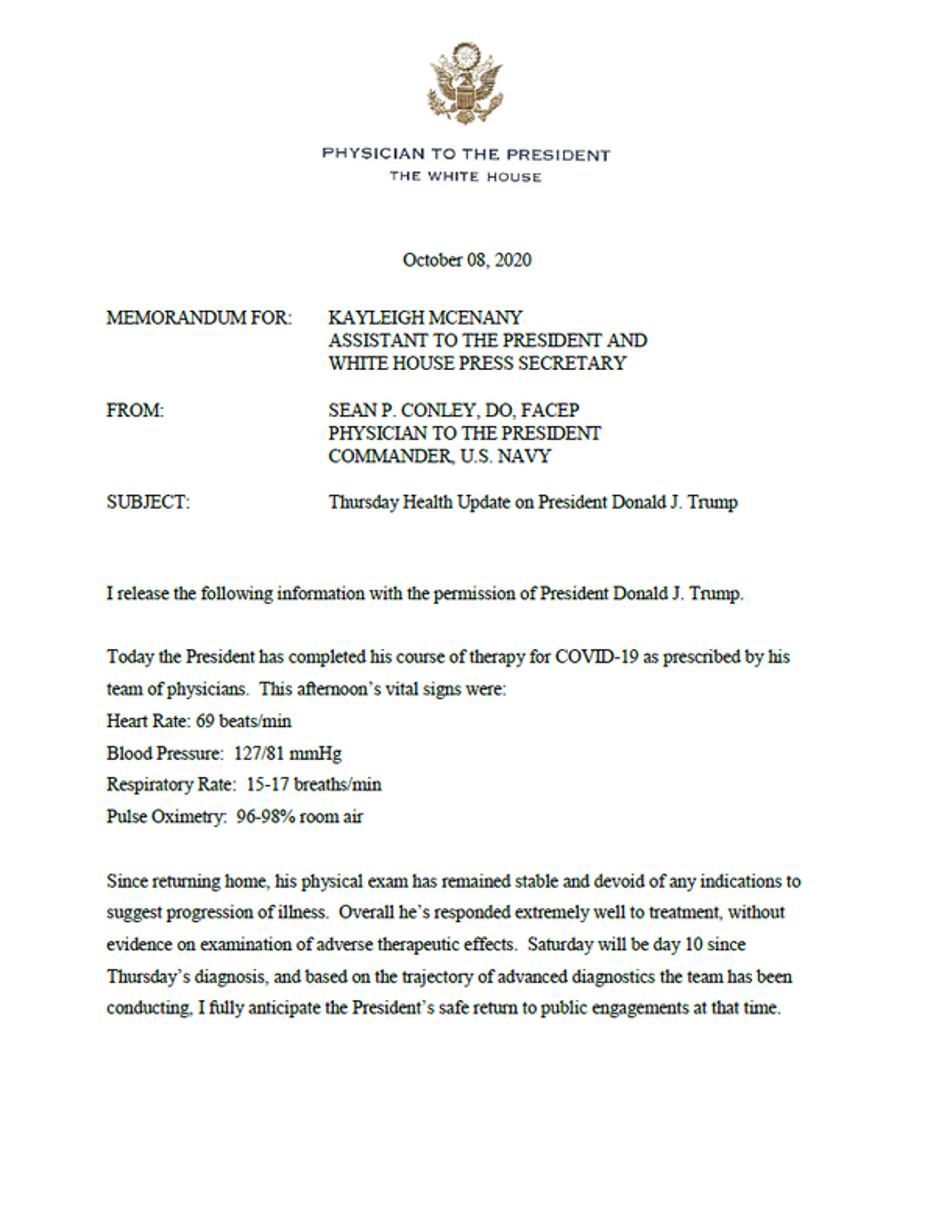The memo released today by Sean Conley is stunning in two ways. Media attention has focused on the fact that it directly contradicts CDC guidelines, which state “… isolation and precautions can generally be discontinued 10 days after symptom onset1 and resolution of fever for at least 24 hours…”. Even more glaring, however, is what the memo does not say. The memo purports to list the President’s vital signs. Any first-year medical student can tell you that a list of vital signs should begin with a patient’s temperature, particularly when the patient has an infectious disease. In fact, the hallmark sign of COVID-19 is an elevated temperature. The absence of a fever is a critical part of the criteria for ending isolation. So, the most important vital sign related to a decision to end isolation is missing.
There are only two possible reasons for Conley to omit the temperature from the memo. Either you are hiding something or you feel the temperature is not meaningful. The first would be an outrage, so let’s focus on the second. Dexamethasone, because it blunts the immune system, will tend to artificially reduce a patient’s fever. It is odd that Dr. Conley makes no mention of the temperature, much less a reason for omitting it. So, Trump could still be on steroids, but that brings up a whole other issue.
The NIH guidelines for the use of dexamethasone state that a COVID-19 patient should receive the drug “for up to 10 days or until hospital discharge”. In other words, if Trump is still receiving steroids, he is ostensibly sick enough to be in a hospital. One can make a case that the White House can provide hospital level care, but that does not get around the fact that a patient on steroids is seriously ill.
So, which is it? Why no temperature? Does the President’s spin doctors not want the public to know the President has an elevated temperature or does he not want us to know he is sick enough to require steroids? Or are they violating NIH protocols as well as CDC protocols to release the President? There is no good answer, but Conley’s disregard for public health and clinical care standards in this memo borders on malpractice.



